
Töölö is the collective name for the neighbourhoods Etu-Töölö and Taka-Töölö in Helsinki, Finland. The neighbourhoods are located next to the city centre, occupying the western side of the Helsinki Peninsula.

Katajanokka is a neighbourhood of Helsinki, Finland, with around 4000 inhabitants in 2005. The district is located adjacent to the immediate downtown area, though in the first major town plan for Helsinki from the mid-18th century, the area fell outside the fortifications planned to encircle the city.

Lars Eliel Sonck was a Finnish architect. He graduated from Helsinki Polytechnic Institute in 1894 and immediately won a major design competition for a church in Turku, St Michael's Church, ahead of many established architects. The church was designed in the prevailing neo-Gothic style. However, Sonck's style would soon go through a dramatic change, in the direction of Art Nouveau and National Romanticism that was moving through Europe at the end of the 19th century. During the 1920s, Sonck would also design a number of buildings in the emerging Nordic Classicism style.

Kulosaari is an island and an East Helsinki suburb in Helsinki, Finland. It is also the 42nd neighbourhood of the city. Construction of villas on the island started in the beginning of the 20th century, and a bridge from Sörnäinen was opened in 1919. Kulosaari was an independent municipality since 1922 until 1946, when it was merged to Helsinki.

Sörnäinen is a neighbourhood in the city of Helsinki, Finland.
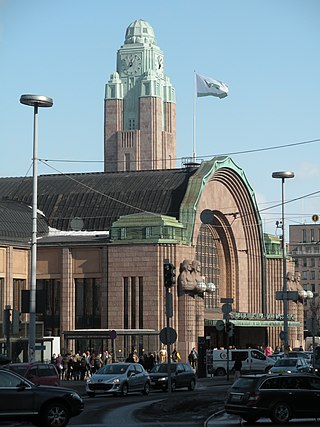
Helsinki Central Station (HEC) is the main station for commuter rail and long-distance trains departing from Helsinki, Finland. The station is used by approximately 400,000 people per day, of whom about 200,000 are passengers. It serves as the terminus for all trains in the Helsinki commuter rail network, as well as for all Helsinki-bound long-distance trains in Finland. The Rautatientori metro station is located in the same building.
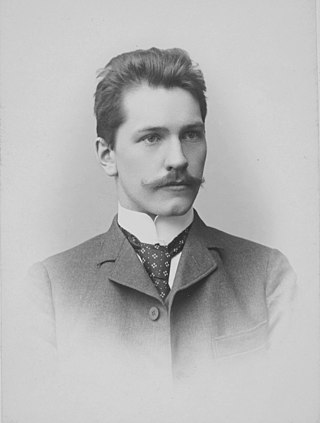
Uno Werner Ullberg was a famous Finnish architect.

Nordic Classicism was a style of architecture that briefly blossomed in the Nordic countries between 1910 and 1930.
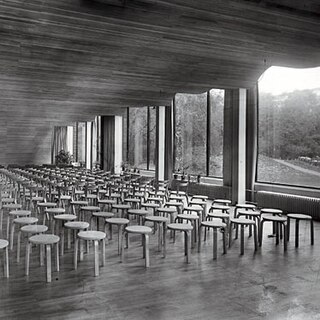
The architecture of Finland has a history spanning over 800 years, and while up until the modern era the architecture was highly influenced by Sweden, however there was also influences from Germany and Russia. From the early 19th century onwards influences came directly from further afield: first when itinerant foreign architects took up positions in the country and then when the Finnish architect profession became established.

Hämeentie is the second longest street in Helsinki, Finland, and among its major thoroughfares. Hämeentie is a multi-lane street beginning at the Hakaniemi square in Siltasaari, and ending near Vanhankaupunginkoski on Koskelantie.

Jätkäsaari is a peninsula and a quarter in Helsinki, the capital city of Finland. It is part to the Kampinmalmi district and Länsisatama neighbourhood. It was the site of the main container harbour in Helsinki until late 2008, when the harbour moved to the new facilities in Vuosaari. The terminals for passenger ferries to Tallinn and Saint Petersburg remain in Jätkäsaari at the West Harbour.
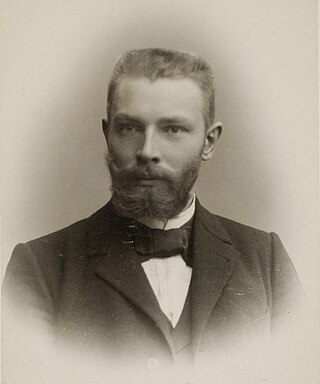
Valter Thomé was a Finnish architect who worked in the National Romantic or Art nouveau style.

Viiskulma is a well known intersection of five streets in Helsinki at the boundary of the Punavuori and Ullanlinna neighbourhoods. The street Fredrikinkatu is one of the oldest and major traffic arteries of Helsinki's inner city.

Carl Theodor Höijer was a Finnish architect. He designed a large number of buildings in central Helsinki. He was the first architect in Finland who managed to pursue a truly successful career without holding an official office. He has been described as the foremost architect working in Neo-Renaissance style in Finland.

Sörnäisten rantatie is a wide street in Sörnäinen, Helsinki, Finland. It leads from the Hakaniemi market square to Suvilahti near the Kalasatama metro station.

Pyynikinrinne is a district of Tampere, Finland. It is located west of the city center. Pyynikinrinne is bordered on the south by the Pyynikki Esker nature reserve, on the north by Pirkankatu and on the east by Mariankatu. The western boundary of the district is the former border between Tampere and Pohjois-Pirkkala municipalities. The neighboring parts of the city are Pyynikki, Ylä-Pispala, Amuri, partly Särkänniemi and Kaakinmaa.
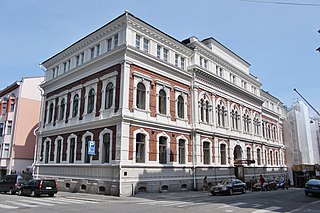
The Rikhardinkatu library is a public library in Kaartinkaupunki, Helsinki, Finland.

Hakaniemenranta is a street on the Siltavuorensalmi shore in central Helsinki, Finland. The street belongs to two separate districts: the western part belongs to Hakaniemi in Kallio, while the eastern part belongs to the Merihaka residential area in Sörnäinen. The bronze World peace sculpture is located on the street.

Albert Mellin was a Finnish architect who spent most of his career in Saint Petersburg, Russia.
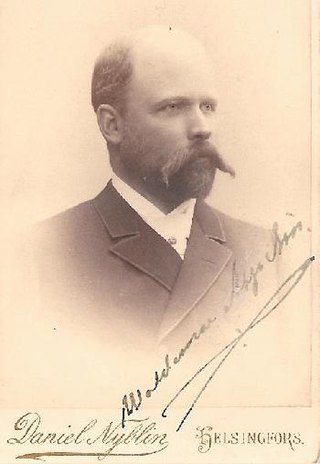
Waldemar Johannes Aspelin was a Finnish architect.























